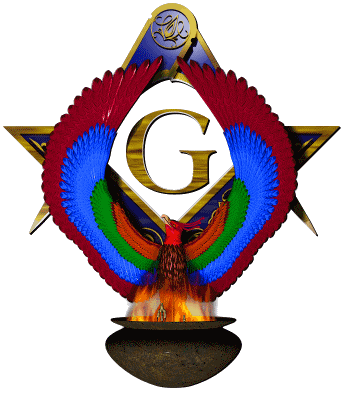Early Folk Art Scrimshawed
Nautilus Shell
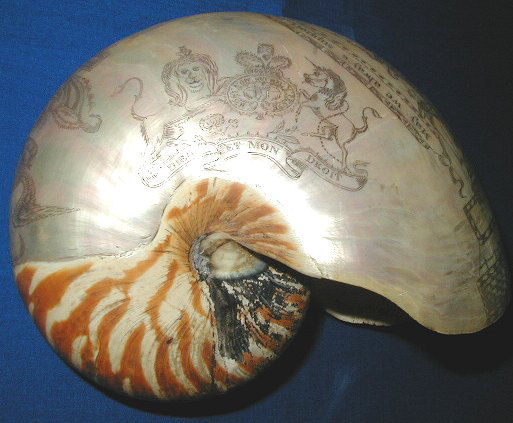
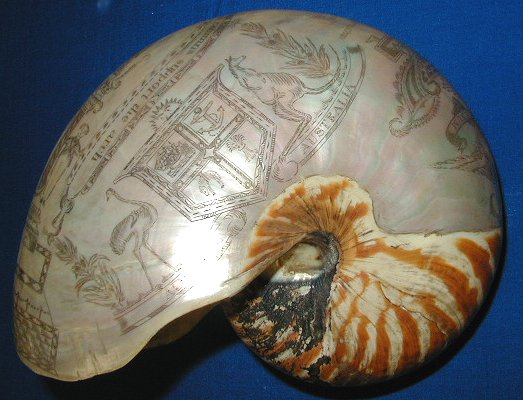
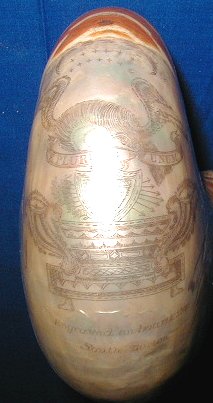
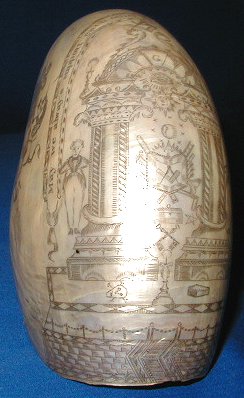
This scrimshawed nautilus shell
is circa 1850 and depicts many of the early symbols of Freemasonry.
During the 19th century and the great Age of Sail,
many Masonic Brethren "went down to the sea in ships." Their maritime
professions ranged from ship builder, or ship's Master, to simple mariner.
Wherever they traveled, Masonry traveled with them. A number of duly
constituted Masonic Lodges were created in the East Indies, South and Central
America, the Mediterranean and other ports around the world where seafaring
Brethren could meet and enjoy fellowship. Traveling certificates, often
printed in three or four languages, attested that they were Master Masons in
good standing and eligible for admittance to these foreign Lodges. During
long voyages, there were other opportunities to reaffirm the dual bonds that
bound them to the sea and Masonry. Without official sanction, Freemasons
seldom lost an opportunity to hoist Masonic flags and pennants while underway,
or in port, in efforts to recognize one another. These displays often
resulted in meetings where brotherhood and good fellowship could be more
thoroughly enjoyed. In a number of countries, the Papal bull of 1738
continued to prevent the conduct of open Masonic meetings ashore, but probably
gave rise to their safe retreat aboard sovereign ships lying at anchor in the
harbor. Life at sea was hazardous in the 19th century, and necrology
published in Grand Lodge Proceedings often grimly announced "death at sea" of
many mariner Brethren. Despite the hazards of life on the briny deep,
Freemasonry proudly rode the waves as the legacy of the above
nautilus shell will
testify.

